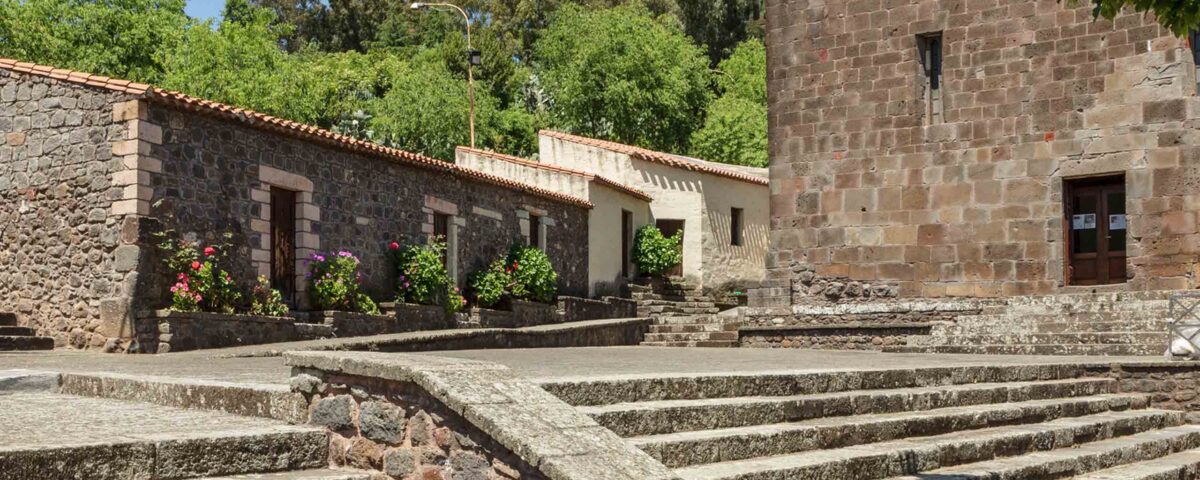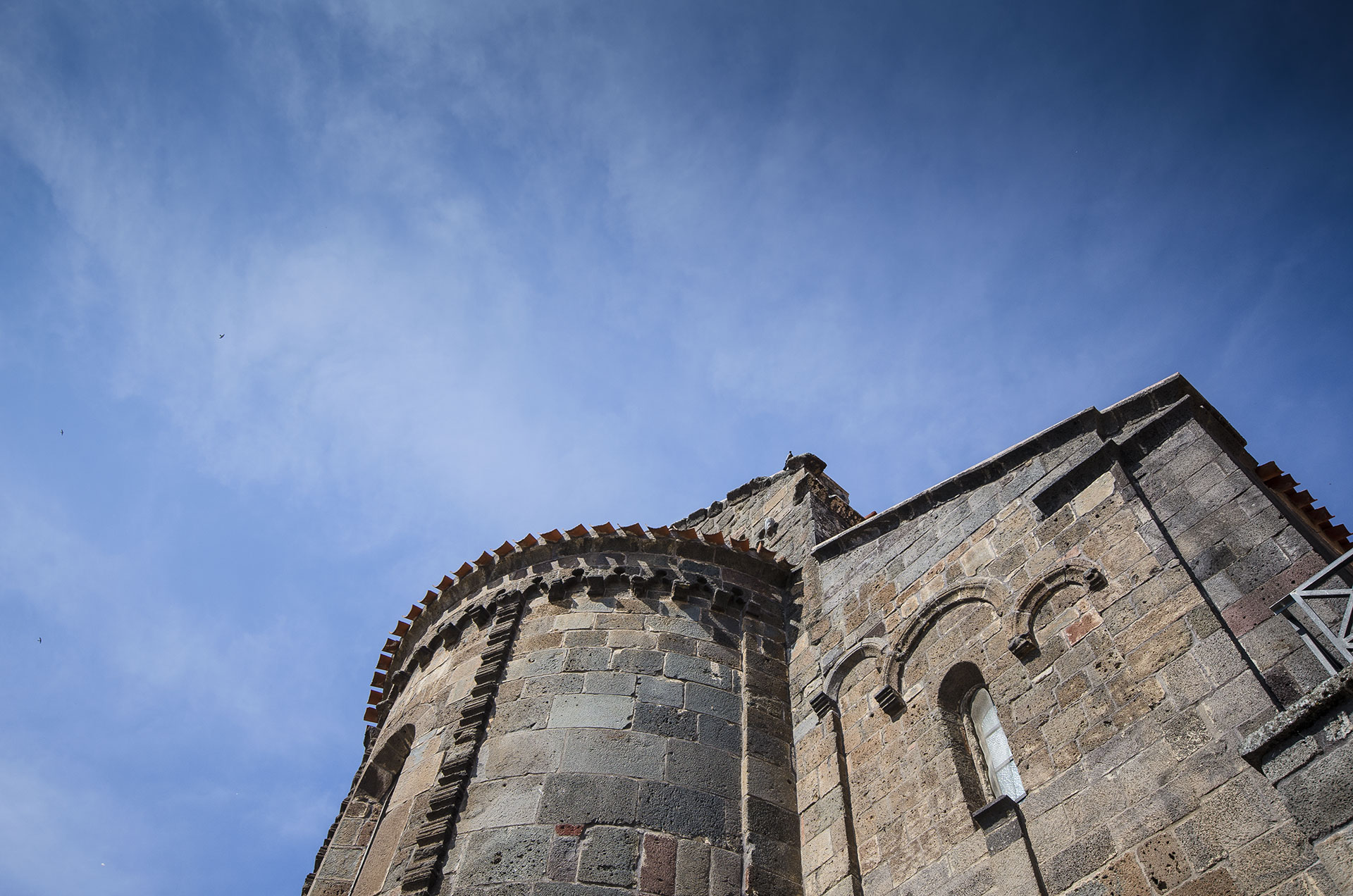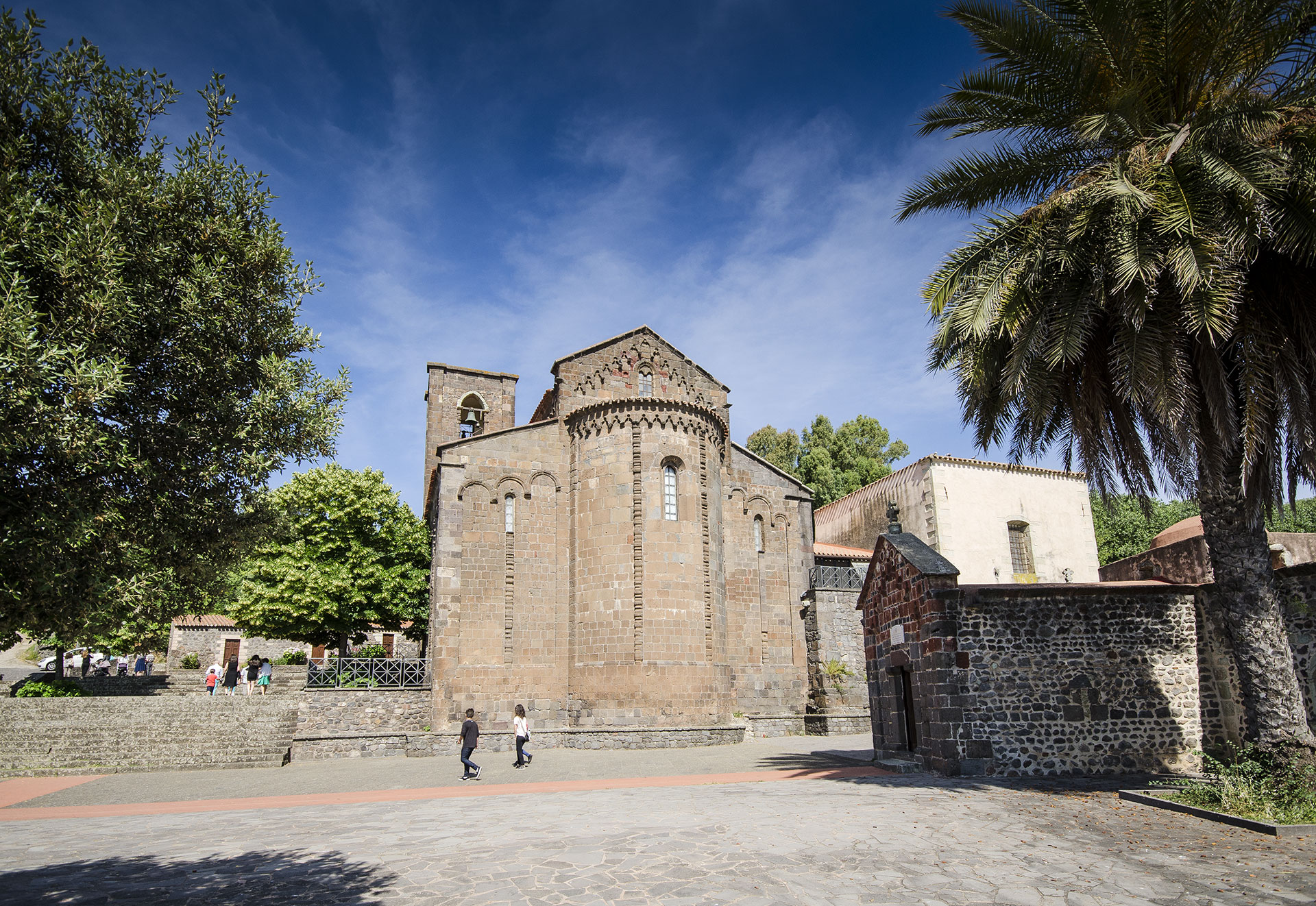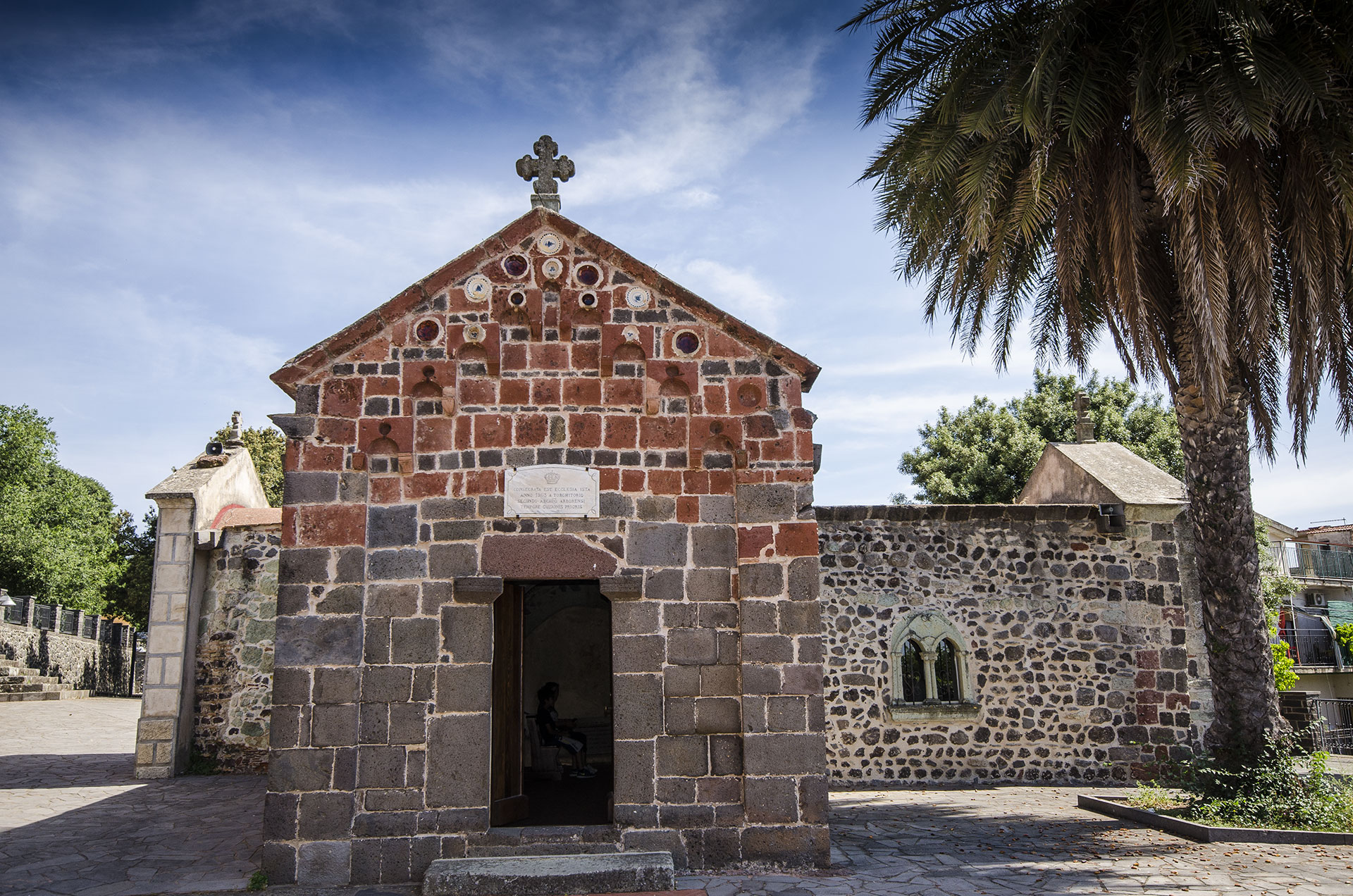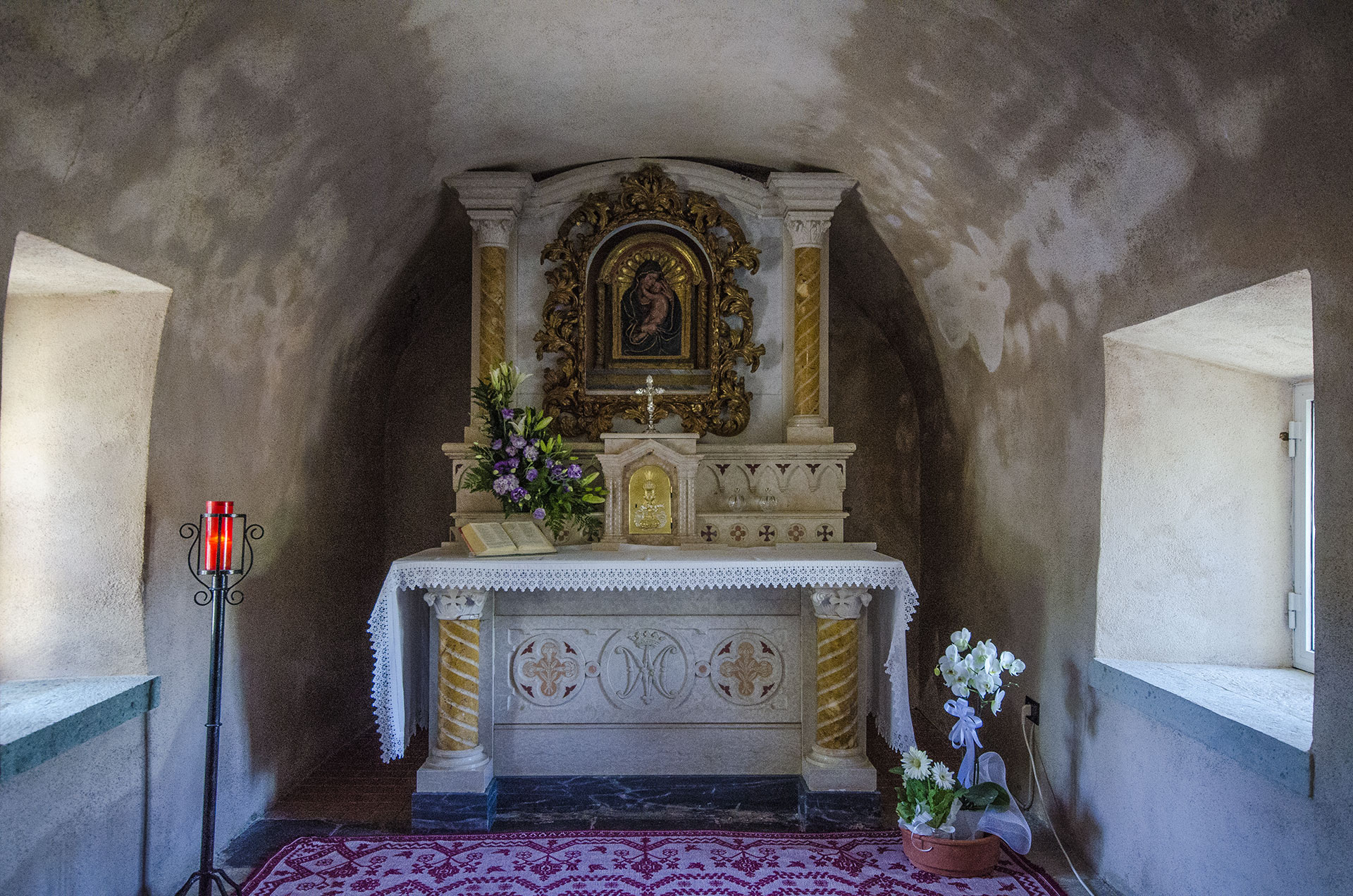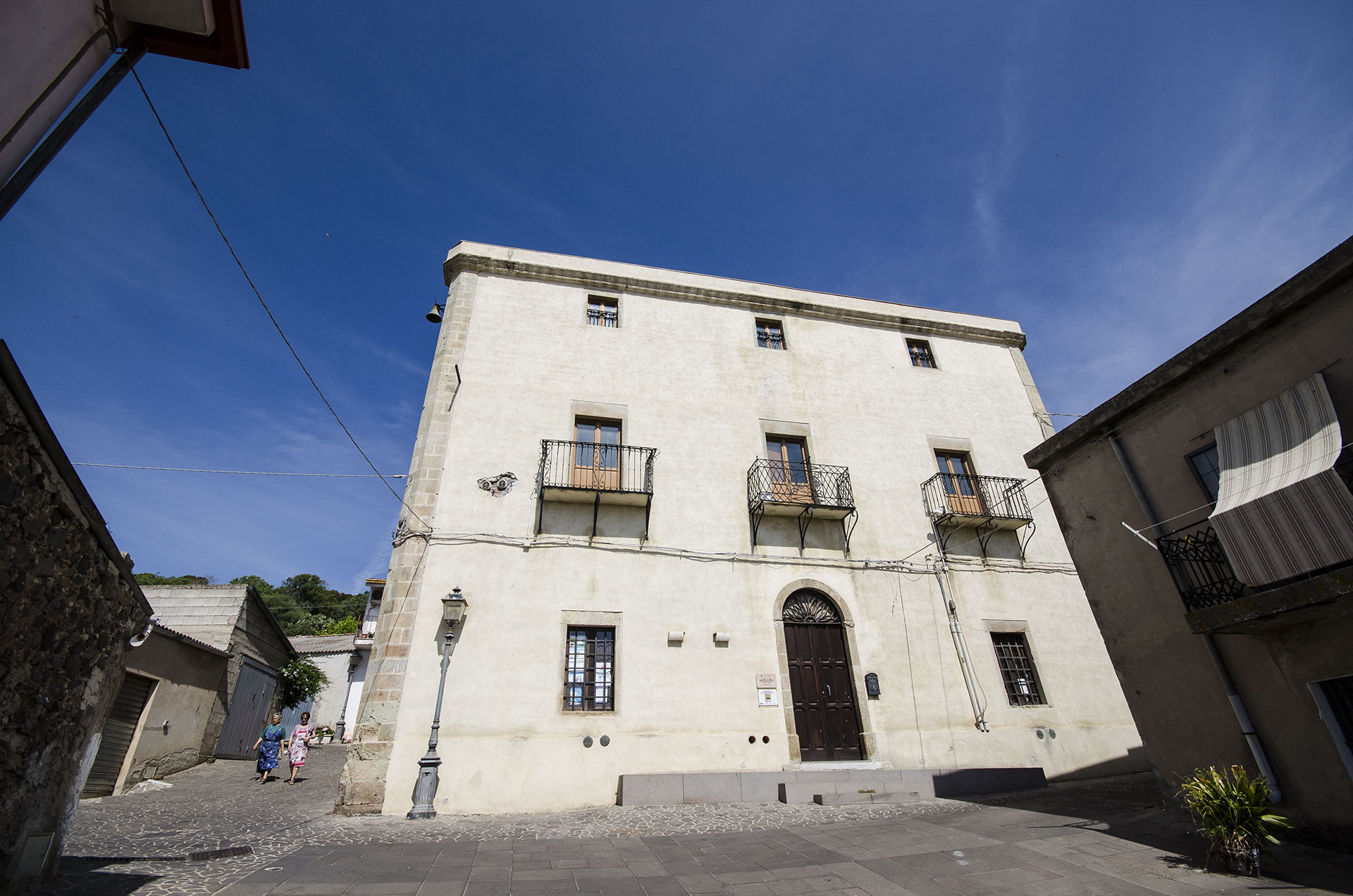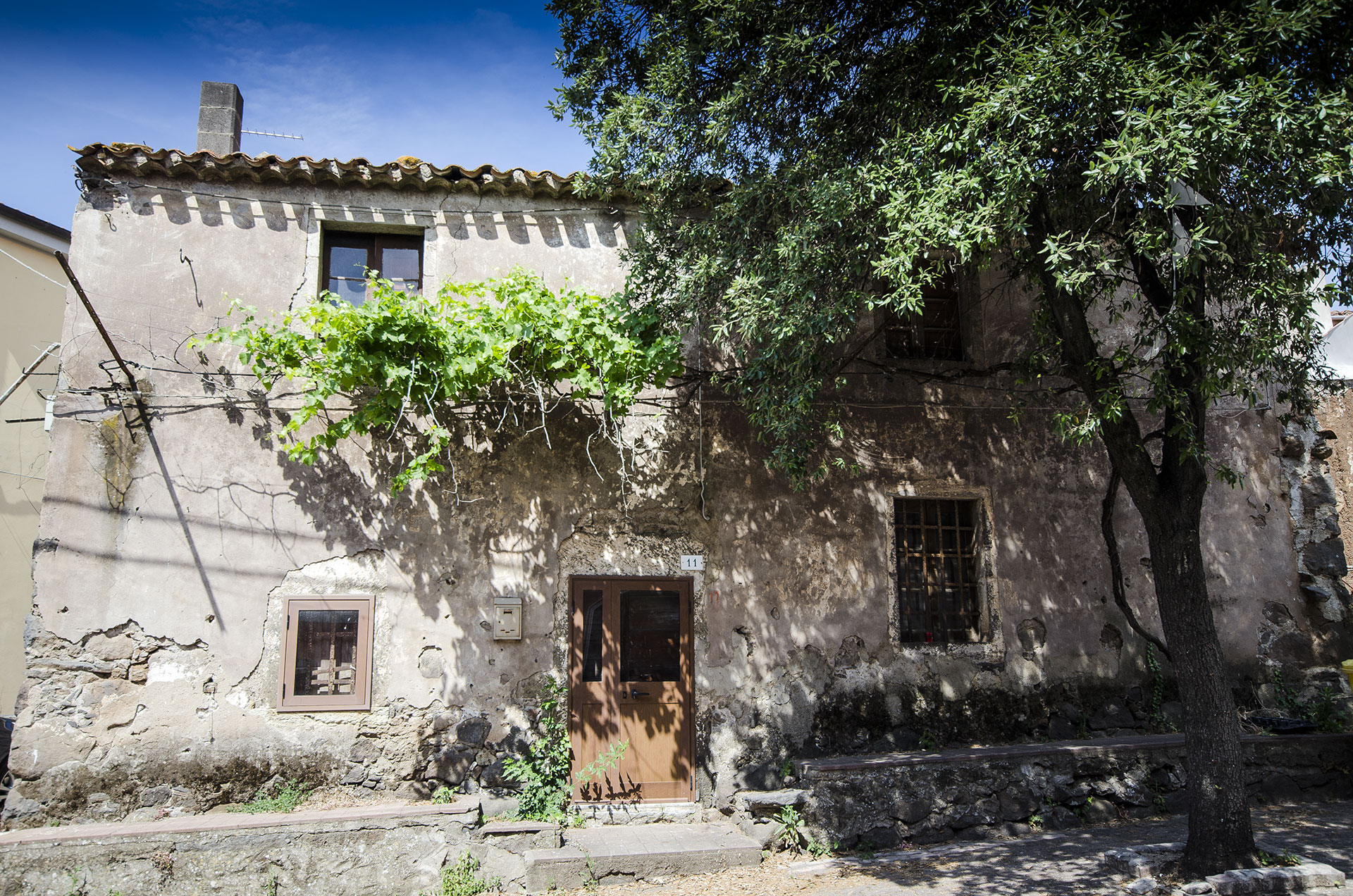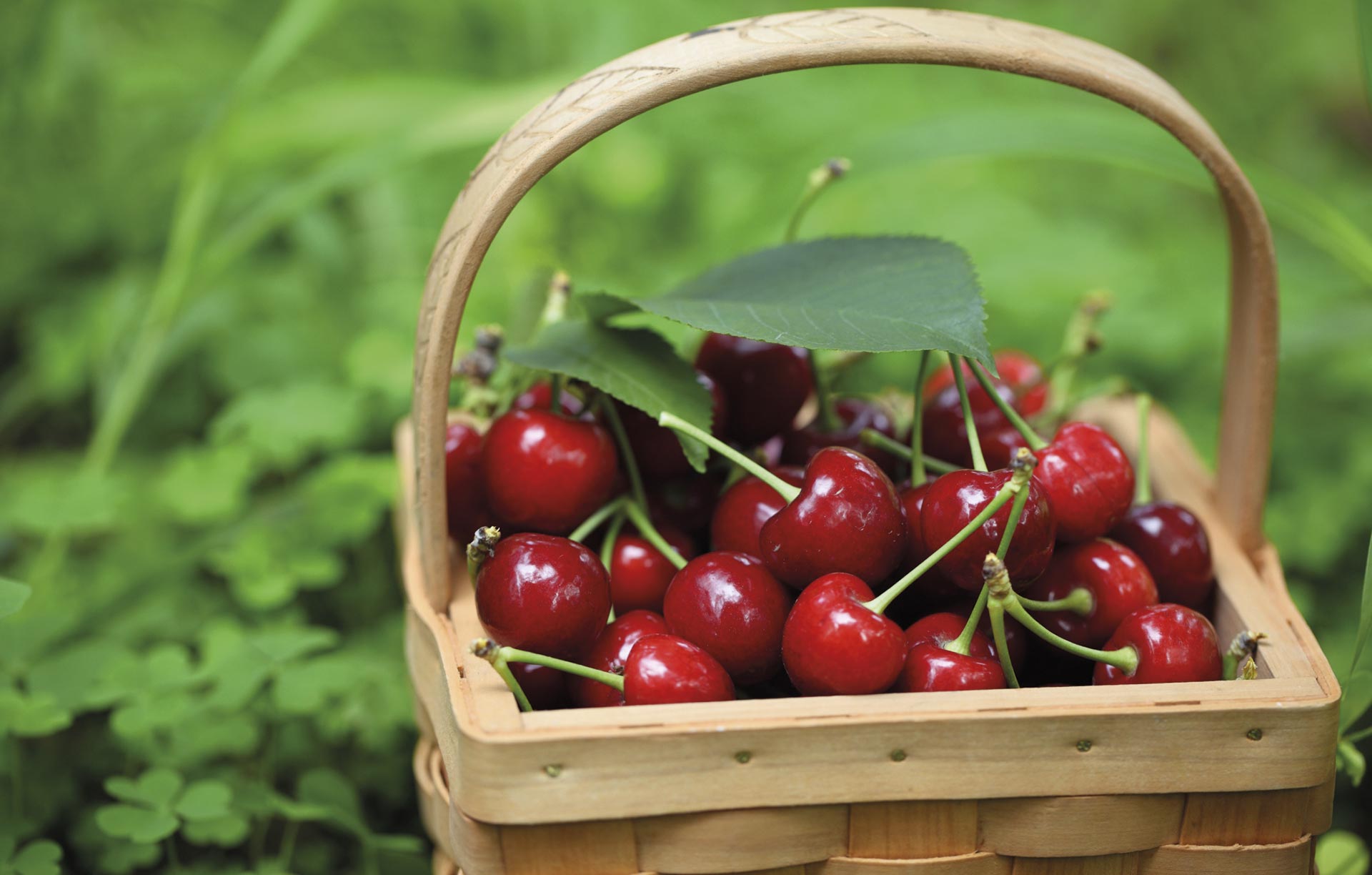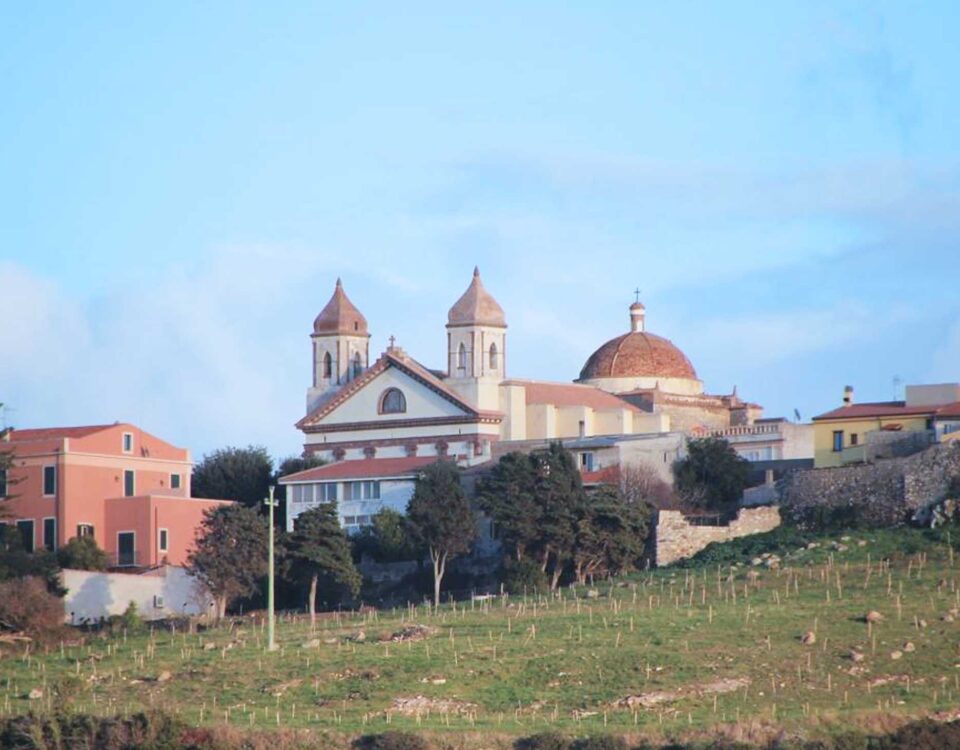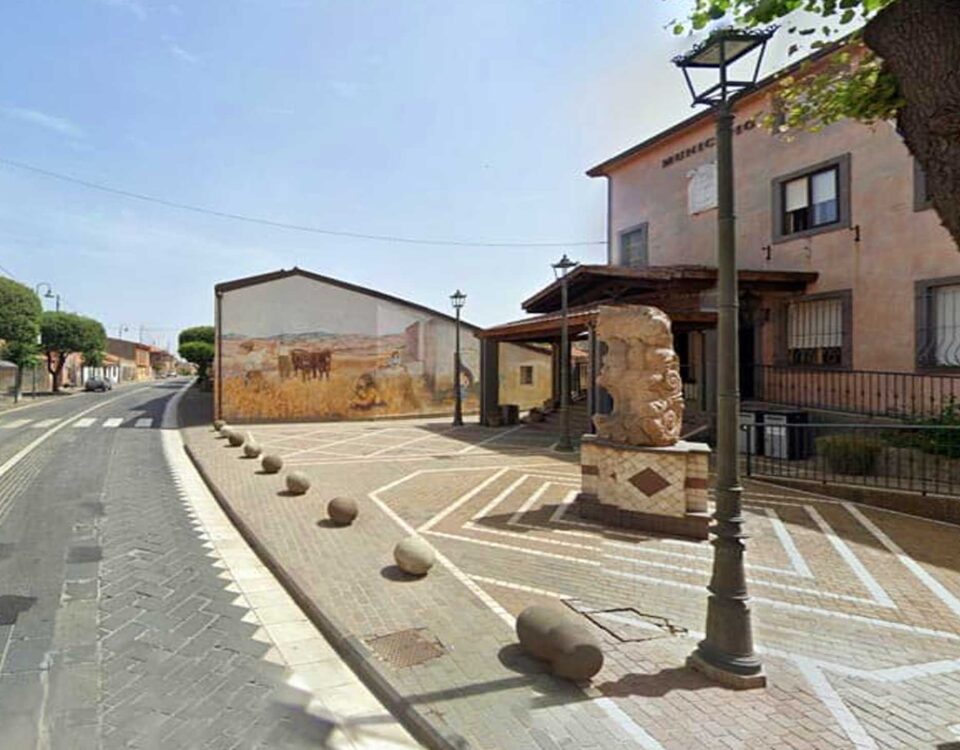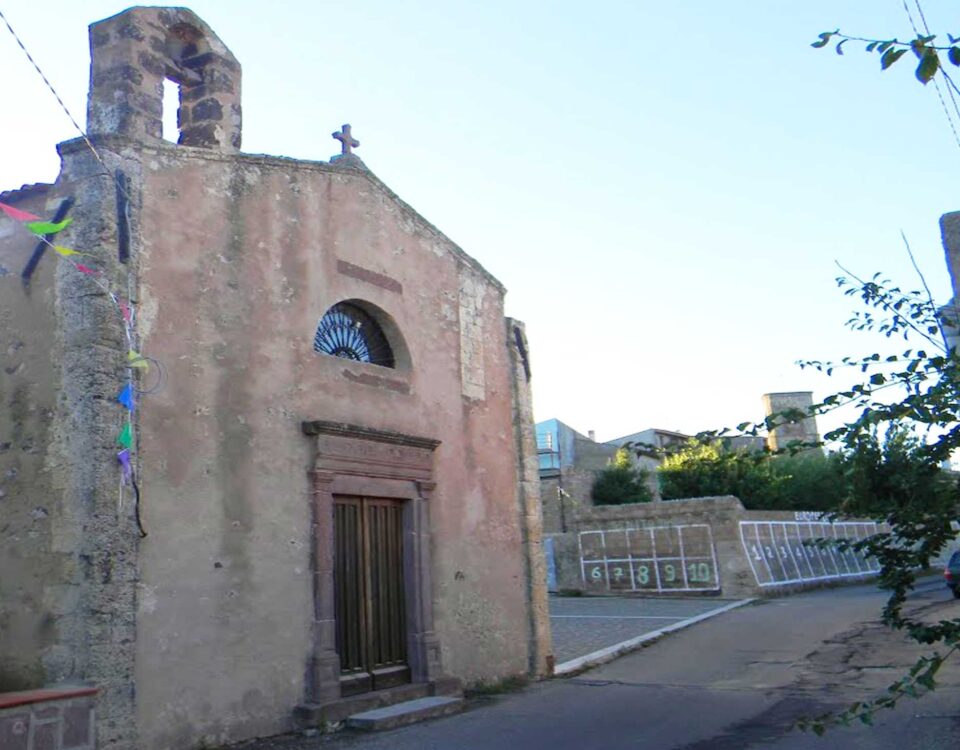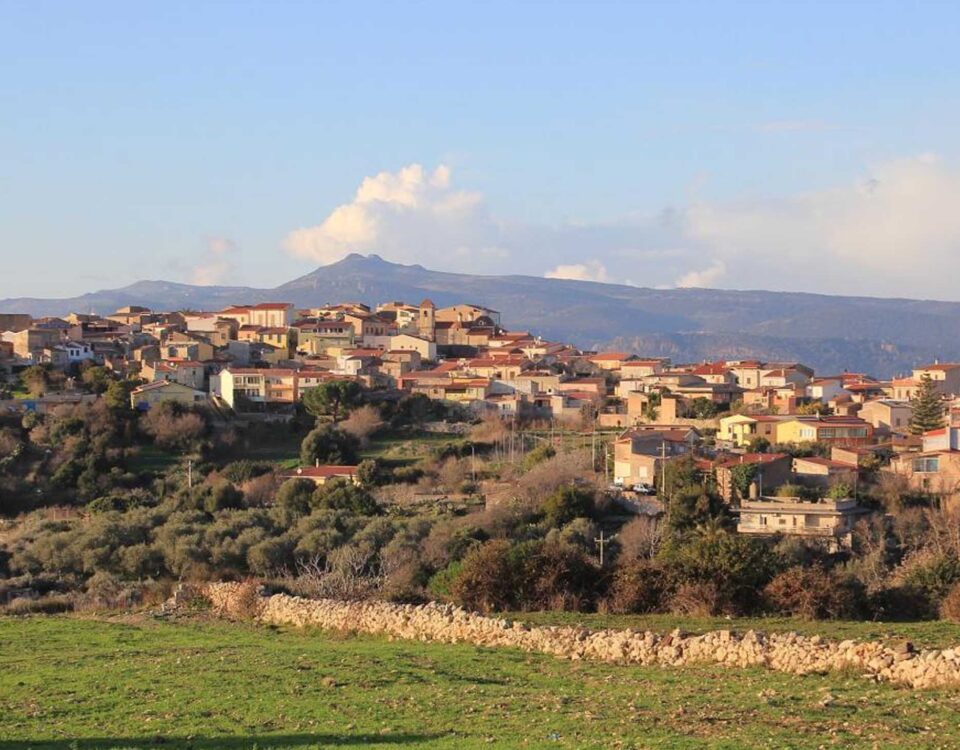
Municipality of Bauladu
21 March 2023
Municipality of Cuglieri
28 March 2023Situated on the slopes of Montiferru, Bonarcado is a town of medieval origin that today has around 1,500 inhabitants. Its territory, covering 28.44 square kilometres, is rich in springs and watercourses: on the border with Santu Lussurgiu is the sos Molinos waterfall with the nearby Pranos spring, renowned for its mineral water. Towards Paulilatino, the rivers that descend from Montiferru meet: sos Molinos, Cannargia and the Cispiri. Along the valleys one can still admire the remains of numerous watermills.
Monte Armiddosu represents its highest point: around the summit are expanses of thyme, which gives the mountain its name and perfumes the air in spring and summer A steep slope of beautiful cork oaks, holm oaks and broom connects the summit to the Pabarile, a vast communal area divided into regular plots assigned to Bonarcadese families for cultivation. Thanks to the fertile volcanic soil on which it stands, it bases its economy on the cultivation of vines, fruit trees, especially cherry trees, and olive trees from which an excellent extra virgin olive oil is extracted. Honey production is also renowned. Of no secondary importance is sheep farming, with the breeding and production of the highly prized meat of the Red Ox, bred almost exclusively in the wild in Montiferru.
The fertile soil, the presence of water and the fairly mild climate have meant that the territory of Bonarcado has been inhabited since ancient times, as evidenced by the numerous archaeological findings.
The first human settlements date back to the Early Bronze Age at Costa Tana, but it is with the Middle Bronze Age that the territory takes on a more structured organization, characterized by a high concentration of nuraghi of the archaic corridor type, the Aurras, Crastu, Temannu Zenna Uda and Sa Perdera nuraghi, and those of a 'mixed' type with the addition of tholos parts, the Cuau and Scovaera nuraghi.
READ ALL
To the Middle and Recent Bronze Age belong those tholos of the single-tower type: Larenzu Nieddu, Ruiu, Mura Procos, Bulare Prunas, Perda Caddos and the complex type Livrandu, nuraghe Bruncu, nuraghe Muschìu. Extensive settlements developed around these nuraghi with phases of life from the Nuragic to the Roman age. There is no shortage in the area of the Tombs of the Giants, remodelled for various purposes in the Middle Ages.
However, its name has always been associated with that of its sanctuary founded in the early 13th century by the Camaldolese monks, a remarkable religious complex located at the exit of the town, whose Romanesque church of Santa Maria and nearby ancient sanctuary of the Madonna di Bonacattu can be visited today. The small church dedicated to Santa Maria di Bonacattu dates back to the 12th century and is today the site of the oldest Marian cult in Sardinia.
This page contains photographic images owned by and are used in accordance with Attribution-NonCommercial 4.0 International (CC BY-NC 4.0) law. AD on top of a thermal complex of which two apsidal arms, the hot bath basin, sections of cocciopesto pavement dating from the Roman phase and late antique mosaics are preserved. The cruciform church has barrel-vaulted arms, which at the intersection create a square space covered by a dome that is only visible from the inside because it is externally concealed within a quadrangular tiburium covered by sloping roofs. Between 1246 and 1263 it was enlarged by workers working on the coeval extension of the church of St Mary. The façade is in light-coloured stone. The sanctuary houses an elegant Madonna and Child in polychrome terracotta by a Florentine sculptor of the school of Donatello.
The Romanesque church of Santa Maria was consecrated in 1146. The foundation act, dating back to 1110, is the first document of the Condaghe di Santa Maria di Bonarcado, a set of documents attesting to the acquisition of property by a monastery and its administration. The Camaldolese monks settled there on that very date. Affiliated to the Abbey of San Zeno in Pisa, the monastery was founded at the behest of Constantine I, a judge from Arborea. The foundation comprised nine churches and various goods such as men (servants and handmaids), cultivated land, vineyards, wooded areas, pastures and livestock, their authority and jurisdiction extended over the entire territory.
The basilica was erected with the use of local dark basalt cantons and reddish trachyte inserts in the façade. Originally with a single nave and a commissa cross plan, it was enlarged between 1242 and 1268 to the east, with the demolition of the original apse and the insertion of a trinity and new semicircular apse. On the southern arm of the transept, the bell tower, with a square barrel vault, was erected.
The craftsmen active in the 13th-century building phase, probably of Iberian origin, introduced for the first time in Sardinia a series of decorative elements of Islamic style, such as lobed arches, bellows or accordion pilasters, stepped corbels and inverted pyramid corbels.


